- The possibility of Ukraine joining NATO was one of Putin’s stated reasons to justify the invasion of the country;
- Putin’s strategy failed and the entry of Sweden and Finland into NATO marks a historic turning point, changing decades of Nordic neutrality;
- The plan backfired and the Russian invasion of Kiev led to the strengthening of NATO’s presence in the Baltic Sea region.
The Baltic Sea is now the scene of major changes, with implications that reverberate beyond its waters. The entry of Sweden and Finland into NATO marks a historic turning point, challenging decades of neutrality and redefining the region’s geopolitical landscape.
These once neutral nations now position themselves as active members of the Atlantic Alliance, strengthening their presence in northern Europe and directly challenging Russian influence in this area.
This movement not only creates new power dynamics in the Baltic Sea, but also reverberates across the global geopolitical landscape, increasing tensions between NATO and Russia and reshaping security strategies in the region.
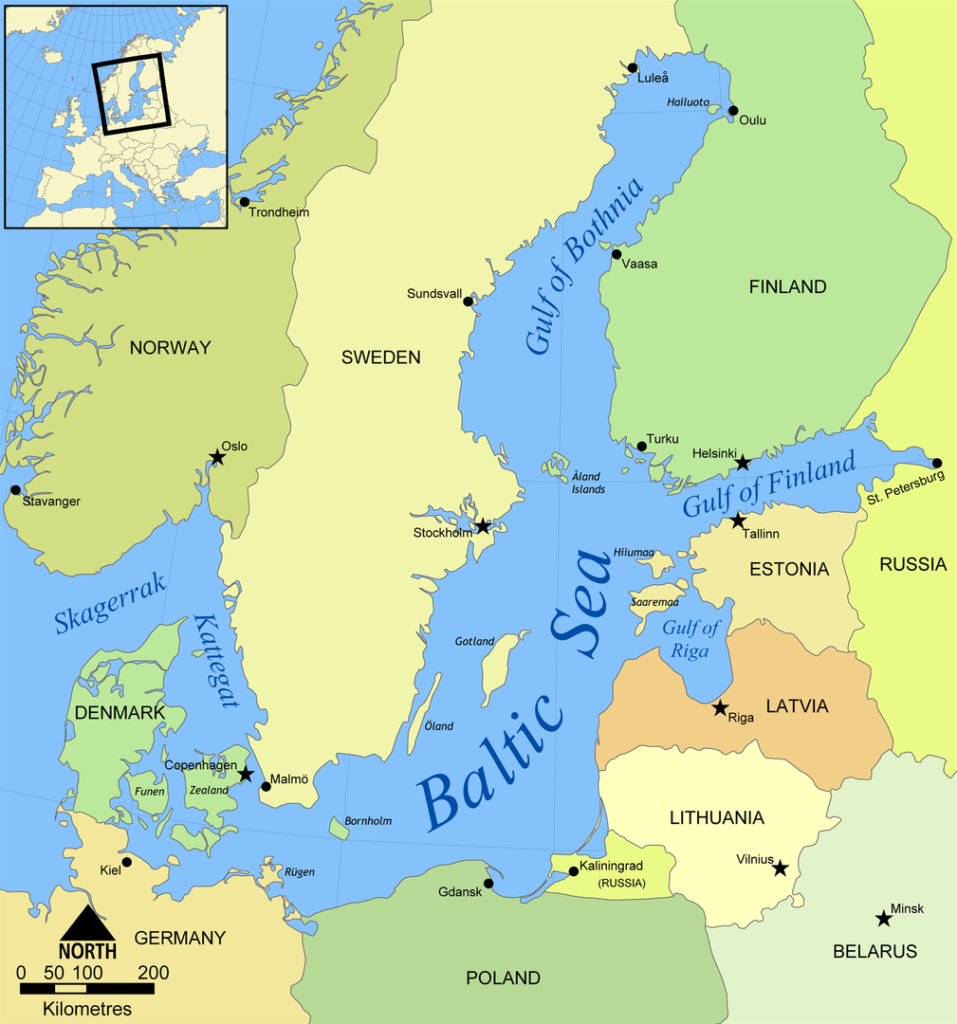
What military and geographical power do Sweden and Finland bring to NATO?
Both Nordic countries present a variety of strategic contributions that can be highly beneficial for NATO, especially in the face of the threat posed by Russia in Eastern Europe.
- Strategic Location:
- Both countries occupy a vital geographic position in northern Europe.
- Sweden shares a maritime border with Russia along the Baltic Sea, while Finland has an extensive land border with Russia, totaling 1,340 kilometers.
- This proximity places them in a crucial position to monitor and respond to potential threats from the east, especially from Russia.
- Their strategic location in the Baltic Sea and the Arctic makes them important for maritime security and surveillance in critical regions.
- Highly Trained Armed Forces:
- Sweden has reinstated conscription, while Finland has always had a defense system based on mandatory military service, ensuring a large pool of trained personnel.
- Sweden has approximately 30,000 active soldiers and 22,000 reservists, while Finland has around 280,000 military reservists.
- Both countries have a long tradition of training in winter warfare operations, specializing in combat in cold and snowy environments.
- Arctic Operations Experience:
- Sweden and Finland have extensive experience and operational capability in Arctic environments.
- Sweden has a long history of operations in cold and snowy environments, while Finland is known for its experience in the Winter War. Despite the Soviet Union having a larger military force, especially in tanks and aircraft, it suffered significant losses and initially made little progress.
- This expertise is crucial considering the growing interest and activity in the Arctic region due to climate change and the available natural resources.
- Air and Maritime Defense Capabilities:
- Ground Forces:
- Sweden has high-quality military equipment, such as the CV90 and AT4. The CV90 is a resilient and agile infantry fighting vehicle designed to transport troops and provide effective fire support. The AT4 is a portable anti-tank rocket launcher capable of destroying armored vehicles and fortifications.
- Finland possesses a powerful artillery capability, notably the M270 Multiple Launch Rocket System (MLRS), capable of launching many rockets at once. In addition to the MLRS, Finland operates a variety of medium and heavy caliber artillery systems.
- As mentioned above, both countries have a long tradition of training in winter warfare operations, making them specialized in combat in cold and snowy environments.
- Air Forces:
- Sweden operates a fleet of modern combat aircraft, including the Gripen fighter produced by Sweden’s famous civil/military company SAAB.
- Finland has a well-equipped air force, with a fleet of 62 F/A-18 Hornet fighters, planning to replace them with 64 more advanced F-35 fighters starting in 2026.
- Naval Forces:
- Both countries maintain naval forces capable of operating in nearby waters and protecting their extensive coastlines.
- Sweden has an advanced fleet of submarines, filling knowledge gaps in NATO. Its experience in submarine operations since 1904 is unique in the region.
- Swedish submarines are adapted to the complex environment of the Baltic Sea, with the ability to remain submerged for long periods. The new Swedish A26-class submarines will be even more versatile, allowing for autonomous submarine operations with remote vehicles.
- Finland has a navy equipped for surveillance and defense operations, including mine countermeasure vessels and patrol ships.
- Contributions to Baltic Defense:
- Given their proximity to the Baltic Sea, Sweden and Finland play a crucial role in the defense of this region.
- Sweden patrols and monitors the waters of the Baltic Sea, while Finland holds a strategic position at the entrance to the Gulf of Bothnia and the Gulf of Finland, providing access to Russia’s second-largest city, St. Petersburg.
- Their participation in NATO strengthens the Alliance’s ability to protect maritime routes and ensure the security of NATO member Baltic countries.
- The island of Gotland, located in the Baltic Sea, has a strategic position that is essential for assisting NATO against potential threats from Russia, as explained further.
The Baltic Sea becoming a “NATO Lake” and isolating Kaliningrad from the rest of Russia
The Baltic Sea, once known for its calmness, has now become a true military activity field. Warships, planes, and military troops now occupy its waters and lands, highlighting NATO’s growing control of the region.
In the midst of these changes lies Kaliningrad, a Russian area separated from the rest of the country and situated between Poland and Lithuania. This region already faced geographical challenges due to not having a direct border with mainland Russia. Now, as a vital military base for Moscow, Kaliningrad faces the possibility of even greater isolation due to increased NATO activities in the area.
With the reinforcement of NATO presence, the isolation of Kaliningrad tends to worsen, creating a kind of military barrier that further limits its access routes to the Baltic Sea and reduces its regional influence. Additionally, with Sweden’s accession to NATO, the Swedish island of Gotland becomes even more important.
Gotland, strategically situated between Sweden and Latvia, plays a crucial role in monitoring and defending maritime and aerial routes crossing the Baltic Sea. Its central location makes it a vital point in protecting against potential Russian threats.
Due to this strategic position, Gotland can serve as an advanced base for surveillance and rapid response operations, strengthening the region’s security and deterring any Russian aggression in the area.
As it is situated in a central position between Sweden and Latvia, the island of Gotland is called the “unsinkable aircraft carrier” due to its strategic location in the Baltic Sea. It’s like the island is a floating stronghold that can be used to monitor and quickly respond to any suspicious activity in the region. This helps reinforce security and deter potential Russian aggressions, acting as a kind of advanced base for defense.

But going back to the beginning, why did Russia invade Ukraine?
Just like in any story, it’s crucial to evaluate the distinct narratives presented by Ukrainian and Western media and Russian media.
Each of them offers a unique perspective on the motives behind Russia’s invasion of Ukraine, reflecting the interests and concerns of each involved country.
- Ukrainian and Western Media:
- According to Ukrainian media, Russia’s invasion of Ukraine has its roots in a complex history of tensions between the two countries, as well as the geopolitical ambitions of Russian President Vladimir Putin.
- Almost 100 years ago, the Great Famine in Ukraine in the 1930s, known as the Holodomor, was a tragedy that resulted in millions of deaths due to the forced collectivization policy implemented by the Soviet government. This historical event is a source of tension between Russia and Ukraine, as many Ukrainians believe it was an attempt at genocide by the Soviet Union.
- Back in 2004, the Orange Revolution was a pro-democracy movement in Ukraine that resulted in the election of President Viktor Yushchenko. This event represented a rejection of Russian influence in Ukrainian politics and a quest for greater integration with the West, sparking further tensions between the two countries.
- In 2004, Viktor Yushchenko, then a presidential candidate in Ukraine, was poisoned with dioxin, causing permanent damage to his face. While there is no direct evidence of Russian involvement, many Ukrainians believe this act was an assassination attempt by Russia to interfere in the elections.
- Over the years, Russia has disrupted natural gas supplies to Ukraine on several occasions during political conflicts, such as in 2006 and 2009. These disruptions caused serious energy supply problems in Ukraine, drawing international criticism and increasing distrust between the two countries.
- In 2013, the “Euromaidan” protests in November were triggered by President Yanukovych’s refusal to sign an association agreement with the European Union, opting for closer ties with Russia. This led to widespread discontent, with calls for the president and government to resign due to issues such as corruption, Russian influence, police brutality, and human rights violations.
- The annexation of Crimea by Russia in 2014 and the conflict in eastern Ukraine reflect a violation of Ukrainian sovereignty and an attempt by Russia to maintain its influence in the region. These events intensified tensions between the two countries and led to an escalation of hostilities.
- Russian Media:
- Russian media often portrays Ukraine as an unstable country with a corrupt government and dominated by radical nationalists. Furthermore, it emphasizes the protection of ethnic Russians in eastern Ukraine and portrays the actions of the Ukrainian government as a threat to these communities.
- According to Russian media, the invasion of Ukraine was justified as a response to alleged threats posed by Kiev and NATO, as well as the need to protect Russian interests in the region.
- Additionally, Russia has expressed concerns about NATO’s continued expansion toward its borders, as well as the possibility of Ukraine becoming a full member of the military alliance.
- Putin also mentioned the need to protect Russian interests in the Donetsk and Lugansk regions, which declared independence in 2014, citing threats to the Russian-speaking population in the region despite Zelensky’s warning.
In summary, while Western media emphasizes the tense historical dynamics and Putin’s ambitions, Russian media highlights concerns about Russia’s security and the need to protect Russian interests in the region.
Russian Strategic Defeat with Finland and Sweden joining NATO
Russia’s strategic defeat was exacerbated by Finland and Sweden joining NATO. Initially concerned about the possibility of Ukraine joining the Western alliance, Russia invaded the neighboring country.
However, this strategy had the opposite effect to what was desired. Instead of deterring Ukraine’s accession to NATO, the Russian invasion inadvertently encouraged Finland and Sweden, two historically neutral nations, to opt for integration into the alliance.
This change represented a strategic defeat for Russia, as, instead of keeping Ukraine out of NATO, Putin inadvertently increased the number of countries aligned with the alliance, further extending the extent of the border between NATO and Russia.
Therefore, Russia’s attempt to contain NATO’s expansion into Ukraine resulted in a strategic mistake, backfiring and intensifying pressure on Russian borders and now transforming the Baltic Sea into the famous NATO Lake.
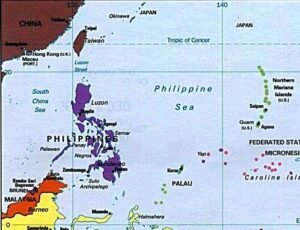
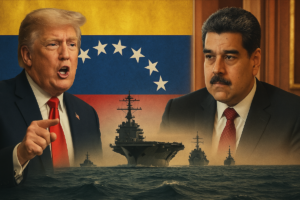


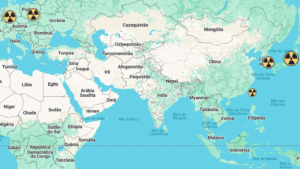






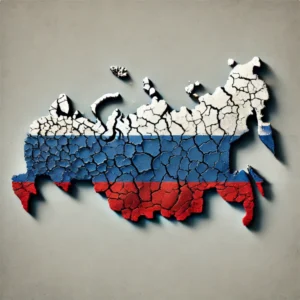
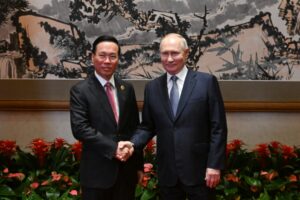

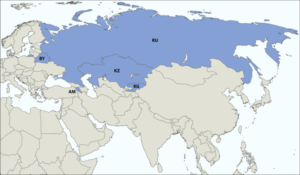

[…] Finland and Sweden joining NATO, Rail Baltic’s benefits are even greater in terms of security. The railway will facilitate […]